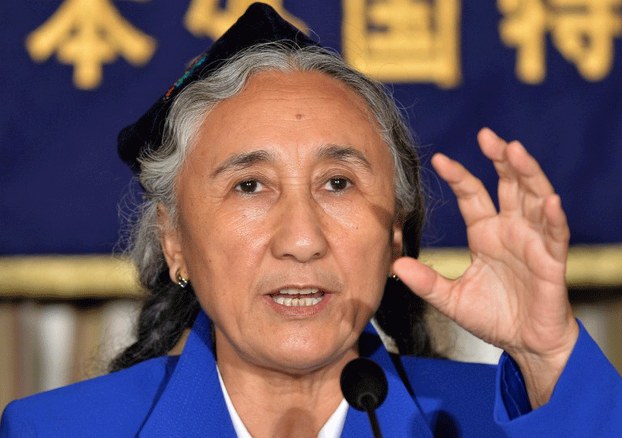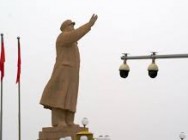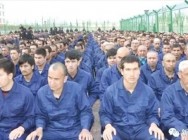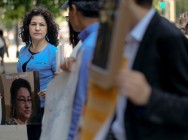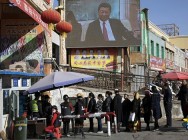Last Minute

- CHINA RELATIONSEAST TURKESTAN PROBLEM AND TURKEY
- FRONTLINE China Undercover
- Elimination of “Uyghur Counter-Revolutionary Officials” in Academic Fields—Exact Quotes Translated from a Mandarin Audio File
- In Push for Trade Deal, Trump Administration Shelves Sanctions Over China’s Crackdown on Uighurs
- Dalai Lama’s 60th Anniversary Symposium: İlshat Hassan speech in English and Chinese
- Uyghur Detainees from Xinjiang ‘Placed in Nearly Every Prison’ in Shandong Province
- Shahrezad Ghayrat, Unrepresented Women
- Uighur Americans Speak Against China’s Internment Camps. Their Relatives Disappear.
- Rozinisa: The true story of the Uyghur girls in the prison
- The Chinese Government Must Account for the Disappearance of the 10+ Million Uyghurs

-

CHINA RELATIONSEAST TURKESTAN PROBLEM AND TURKEY
-

FRONTLINE China Undercover
-

Elimination of “Uyghur Counter-Revolutionary Officials” in Academic Fields—Exact Quotes Translated from a Mandarin Audio File
-

In Push for Trade Deal, Trump Administration Shelves Sanctions Over China’s Crackdown on Uighurs
-

Dalai Lama’s 60th Anniversary Symposium: İlshat Hassan speech in English and Chinese
-

Uyghur Detainees from Xinjiang ‘Placed in Nearly Every Prison’ in Shandong Province
HOME | NEWS | UYGHUR ‘At Least 2,000 Uyghurs Killed’ in Yarkand Violence: Exile Leader
An exile Uyghur leader has claimed that at least 2,000 ethnic minority Uyghurs may have been killed by Chinese security forces following riots last week in a restive county in China’s western Xinjiang region, far more than reported by the state media.
Citing “evidence” from the ground, Rebiya Kadeer, president of the Germany-based World Uyghur Congress (WUC), accused the Chinese authorities of a cover up of what she called a “massacre” of Uyghurs in Yarkand (in Chinese, Shache) county in Xinjiang’s Kashgar prefecture on July 28.
Chinese state media had at first said “dozens” of people were killed but revised upwards the death toll to 96 this week, saying the riots erupted after a “gang” of Uyghurs attacked a police station and government offices in Yarkand’s Elishku township and that the authorities reacted with “a resolute crackdown to eradicate terrorists.”
But Kadeer told RFA’s Uyghur Service that information the WUC received from the area was “absolutely different than the accounts provided by Chinese official narrative.”
“We have evidence in hand that at least 2,000 Uyghurs in the neighborhood of Elishku township have been killed by Chinese security forces on the first day [of the incident] and they ‘cleaned up’ the dead bodies on the second and third day during a curfew that was imposed,” she said.
“We have recorded voice messages from the people in the neighborhood and written testimonies on exactly what had taken place in Elishku township of Yarkand county during this massacre,” she said, adding that the victims were mainly from villages No. 14, 15 and 16 in the township.
“We can share these facts without releasing the source of the information as their security and safety is at risk,” said Kadeer, who has been in exile in Washington since being released from a Chinese prison in 2005.
Highest death toll in Xinjiang

Kadeer said the death toll in Yarkand was the highest reported in Xinjiang violence, surpassing the 200 killed in rioting in the regional capital Urumqi in 2009 involving the mostly Muslim Uyghurs and members of China’s Han majority.
“It is clearly state terrorism and a crime against humanity by any standard committed by Chinese security forces against the unarmed Uyghur population,” she charged.
Kadeer’s claim could not be independently verified but interviews with Uyghur and Han residents in Yarkand and the Silk Road city of Kashgar by RFA’s Uyghur and Mandarin Services indicated that the death toll was much higher than that reported by the state media, with one Han Chinese resident saying it could be “more than 1,000.”
Kadeer said that the riots were triggered by a march by a group of Uyghurs to the police station and government offices to seek justice “for the killing of innocent villagers,” including the shooting death of a family of five by police over a dispute about wearing traditional headscarves.
She claimed the police gunned down nearly all the protesters and went on to kill others in a house-to-house search.
“As usual Chinese security forces have regarded this mass gathering of Uyghurs as a crime and that they should be silenced, and started to shoot at them without even listening to their concerns,” Kadeer said.
Uyghurs attacked with sticks
She said that some Uyghurs, armed with sticks, attacked government vehicles and government employees in protest against the violence by the security forces.
“Chinese military forces immediately called for [reinforcements] and started to shoot and kill all the participants of the march and other villagers during house-to-house searches.”
The authorities had sealed off the affected area, which has been surrounded by heavily armed security forces, she said, adding that the July 28 bloody incident had been overshadowed by the Israeli military offensive in Gaza which had grabbed headlines in recent weeks.
“At least 2,000 innocent Uyghurs in three villages of Yarkand county have been brutally killed by Chinese security forces without even condemnation from the outside world,” Kadeer said.
In the violence-hit Elishku township, a Uyghur shop owner told RFA that “some streets have been almost deserted because many people have died,” citing accounts by his customers who had heard “continuous gunfire and cries for help.”
Ambulance sirens
A resident of one of the three villages gripped by the violence in Elishku township said she heard ambulance sirens sounding throughout the day on Aug. 2, five days after the riots.
When asked about casualties, a doctor at Yarkand People’s Hospital, Mihrigul Awut, said, “Sorry, I cannot answer any questions about the injuries from the incident.”
However, local Han Chinese residents of Yarkand county and the Silk Road city of Kashgar said the ruling Chinese Communist Party was trying to “cover up” the extent of the violence, and had greatly underreported the number of deaths.
A Han Chinese businesswoman from Kashgar, which administers Yarkand, said that more than 1,000 people, including Hans and Uyghurs, could have died from the violence which she charged was caused by armed Uyghurs.
“If you add up our own [Han casualties] with the gangsters, including those of us who died for no reason, it’s more than 1,000,” she told RFA’s Mandarin Service.
“It’s because a lot of the East Turkestanis … attacked people with great, big chopping knives,” she said, referring to the Uyghurs. “It’s a bit like Iraq over here.”
“Some of them were local Uyghurs from around here, while some were from overseas,” the businesswoman said, adding, “We have five border crossings to Pakistan around here.”
Many Uyghurs refer to Xinjiang as East Turkestan, as the region had come under Chinese control following two short-lived East Turkestan republics in the 1930s and 1940s.
‘Premeditated’ attack
The official Xinhua news agency had said that of the official death toll of 96, 35 of the dead civilians were Han Chinese, while two were Uyghurs and others were “terrorists.”
The news agency cited the government as saying investigations showed the attack was “organized and premeditated,” and “in connection with the terrorist group East Turkestan Islamic Movement (ETIM).”
Chinese authorities have blamed ETIM and “separatists” from Xinjiang for a series of attacks which have expanded in scale and sophistication over the last year, including a May 22 bombing in Urumqi, which killed 39 people and injured 90, and which prompted the launch of an anti-terror campaign across the region.
Reported by Shohret Hoshur for RFA’s Uyghur Service and Qiao Long for the Mandarin Service. Translated by Mehmet Tohti, Jennifer Chou and Luisetta Mudie. Written in English by Parameswaran Ponnudurai and Luisetta Mudie.
http://www.rfa.org/english/news/uyghur/yarkand-08052014150547.html
RELATED NEWS






